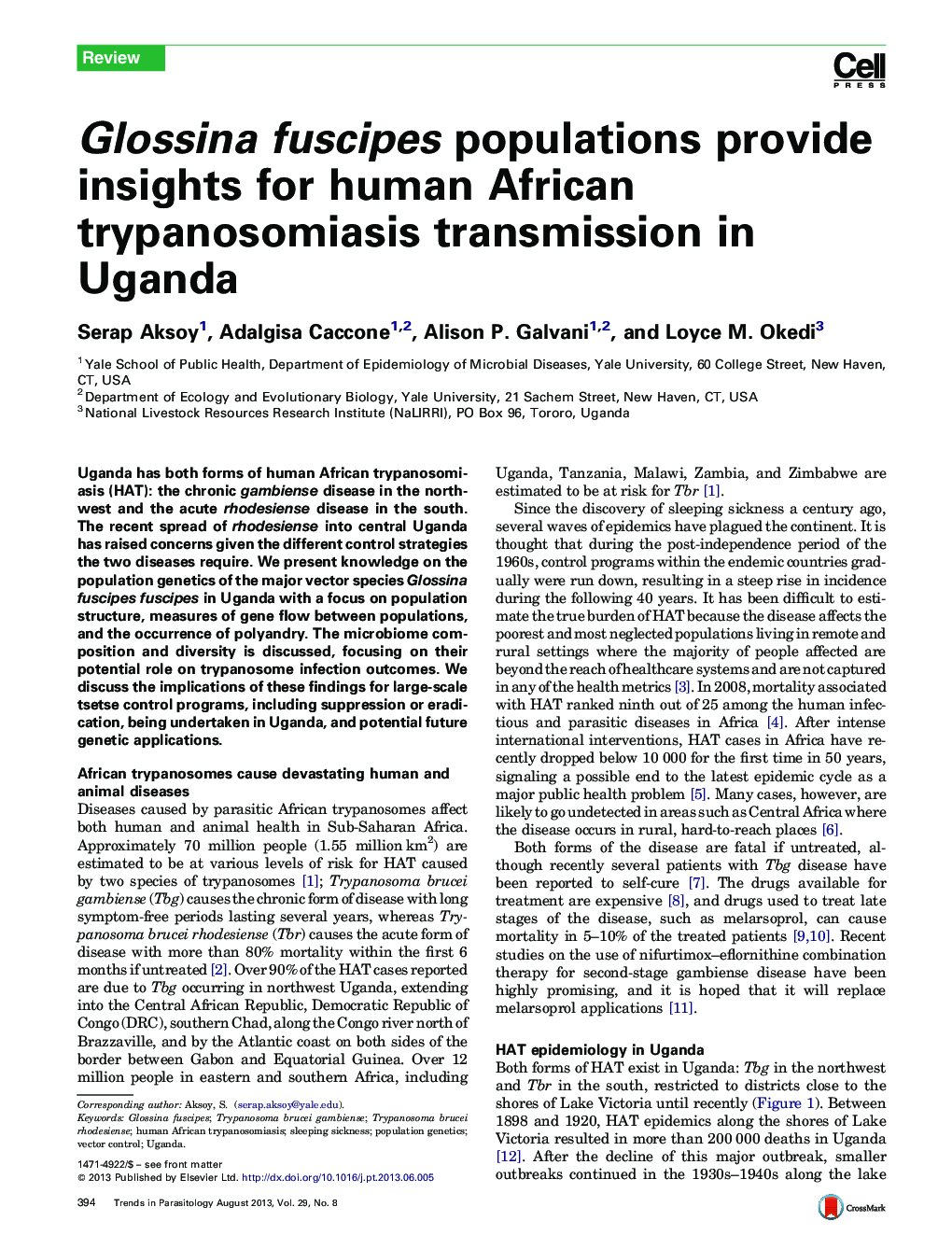| Article ID | Journal | Published Year | Pages | File Type |
|---|---|---|---|---|
| 3423026 | Trends in Parasitology | 2013 | 13 Pages |
•Population genetics data offer insights with relevance for vector control programs.•Genetic data can help to devise control strategies to prevent reinvasion of target areas.•There are three (northern, southern, and western) genetically distinct clusters of Glossina fuscipes in Uganda.•There is apparent gene flow from southeast to northwest regions of Uganda.•Movement of flies from the southeast towards central Uganda may fuel new HAT foci.•The fly microbiome may influence parasite transmission traits.•Low-density infections with multiple Wolbachia strains are widely prevalent.•There is evidence for a high frequency of multiple matings in females.
Uganda has both forms of human African trypanosomiasis (HAT): the chronic gambiense disease in the northwest and the acute rhodesiense disease in the south. The recent spread of rhodesiense into central Uganda has raised concerns given the different control strategies the two diseases require. We present knowledge on the population genetics of the major vector species Glossina fuscipes fuscipes in Uganda with a focus on population structure, measures of gene flow between populations, and the occurrence of polyandry. The microbiome composition and diversity is discussed, focusing on their potential role on trypanosome infection outcomes. We discuss the implications of these findings for large-scale tsetse control programs, including suppression or eradication, being undertaken in Uganda, and potential future genetic applications.
